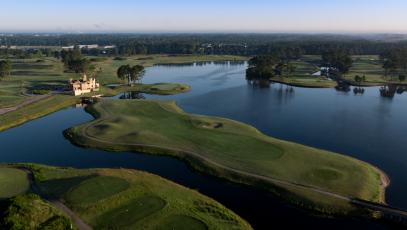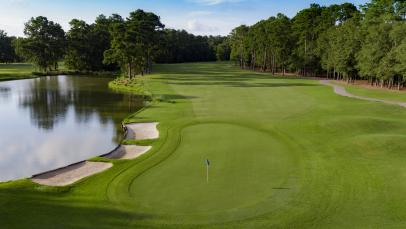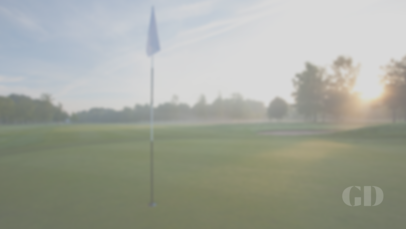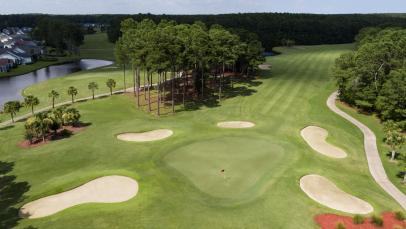Courses
Best golf courses near Garden City, SC
Below, you’ll find a list of courses near Garden City, SC. There are 51 courses within a 15-mile radius of Garden City, 46 of which are public courses and 5 are private courses. There are 45 18-hole courses and 5 nine-hole layouts.
The above has been curated through Golf Digest’s Places to Play course database, where we have collected star ratings and reviews from our 1,900 course-ranking panelists. Join our community by signing up for Golf Digest+ and rate the courses you’ve visited recently.
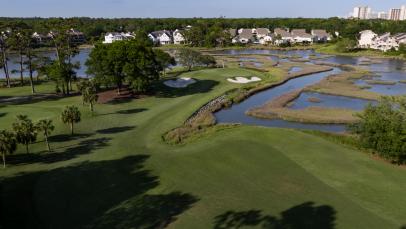
Its ocean-side dunes are mostly covered with turfgrass and mature trees now, but when Robert Trent Jones built The Dunes back in the late 1940s, the property was primarily windswept sand dotted with lagoons. Those lakes come in prominently on many holes, particularly on the 11th through 13th, dubbed Alligator Alley. (The boomerang-shaped par-5 13th is called Waterloo.) The home hole, with a pond in front of the green, started as a gambling par 5 but today is a daunting par 4. The course has hosted three USGA championships, including the 1962 U.S. Women's Open and most recently, the 2017 U.S. Women's Amateur Four-Ball.
View Course
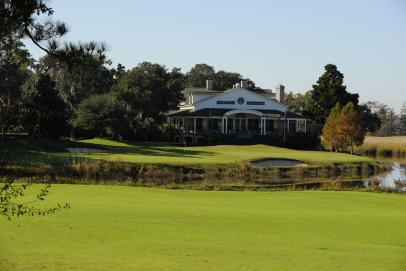
Caledonia was Strantz’s first solo design in 1994, and his creativity shines on this golf-only, oak-dotted, sand-dune parcel abutting the marshes and rice paddies of Pawley’s Island. The design is ordered and composed, twisting low through the heavy tree canopy while setting up classic hole strategies into angled greens. There are touches of Pete Dye and just enough quirk to suggest something more intense and experimental brewing under the surface. Subdued and rhythmic, Caledonia is currently ranked 85th on Golf Digest's latest 100 Greatest Public ranking (it’s been as high as 66th). Two musts: The chowder at the turn, and a drink on the porch behind the 18th hole.
View Course
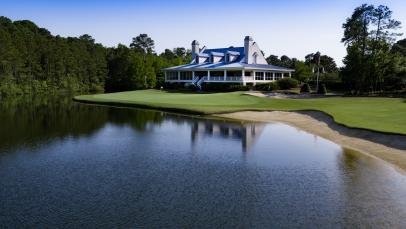
Strantz returned to Pawley’s Island just a few years after Caledonia opened, nearly to the exact same place, in fact. True Blue is Caledonia’s sister course, located on an inland property that sits just across the street, though sequestered from any marsh views. But what it lacks in scenery it makes up for in volume. Everything at True Blue is bigger and more heroic. Greens erupt out of sand barrens, fairways are 60 to 90 yards wide and holes take on the form of ambling caterpillars. The abrupt, hi-contrast shaping, made possible by the sandy terrain, is a not so subtle nod in the direction of Pine Valley.
View Course

This Jack Nicklaus design would contend not only for the best in Myrtle Beach but the best public courses in South Carolina. Pawleys Plantation lies among the natural saltwater marshes and boasts some strong par 3s. According to Nicklaus, each hole has a distinct intended strategy shaped by hazards, trees, bunkers, and even a double green shared by two holes.
View Course

A past member of our 100 Greatest Public list, King’s North is one of three layouts at Myrtle Beach National. The Arnold Palmer design features some of the Grand Strand’s most notable holes, including the par-5 sixth hole, aptly nicknamed “The Gambler.” Off the tee, players must choose one of the two fairways, either the island strip that shortens the hole, or the safer option to the right, making it a three-shotter. The par-3 12thfeatures an island green, and though it’s more generous than the famous TPC Sawgrass original, the wooden bulkheads lining the green provide similar intimidation.
View Course

Grande Dunes reopened in September 2022 after a complete greens and bunker renovation over the summer. Spectacular views of the Intracoastal Waterway and Grande Dunes Marina make this links-style golf course well worth the visit. Designed by Roger Rulewich Group, the course was built on a high bluff—the ideal setting for a picturesque sunset round. Expansive fairways littered with penalty areas throughout define Grande Dunes as a difficult, yet enjoyable resort course.
View Course

Once the host of the Senior PGA Tour Championship and now home to Dustin Johnson’s annual World Junior Golf Championship, TPC Myrtle Beach is designed to challenge even the pros. Numerous water hazards, strategically placed trees, and forced carries make this track a tough, but enjoyable test.
View Course
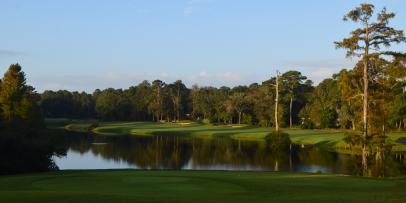
A Dan Maples design, The Heritage Club weaves along the Waccamaw River Trail and borders vast abandoned rice fields. This Pawleys Island course is complemented by lush native flowers along its rolling fairways as well as passerby boats on its riverside holes.
View Course
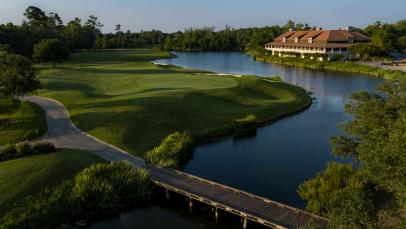
A member of Golf Digest's 100 Greatest Public ranking from 2003 to 2007, the Love course is one of the best in Myrtle Beach and yet ranked as the third-best at golf-rich Barefoot Resort (just a few tenths of a point behind the Fazio course, according to our panelists). This is Love Golf Design's only work in Myrtle Beach, and it makes good use of the land with a good variety of holes—long, short and doglegs in each direction.
View Course

The Reserve Golf Club in Pawleys Island is one of the best courses in South Carolina. Discover our experts' reviews and where The Reserve ranks in our rankings
View Course
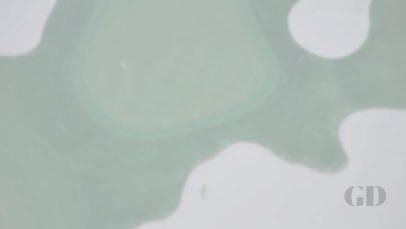
Wachesaw Plantation Club in Murrells Inlet is one of the best courses in South Carolina. Discover our experts' reviews and where Wachesaw Plantation ranks in our rankings
View Course
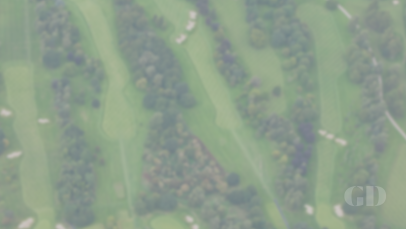
From Golf Digest Architecture Editor emeritus Ron Whitten:In the mid-1980s, I was researching a Golf Digest article on reversible golf courses, and one of the people I called was real estate developer Wallace Pate, who had laid out a reversible 10-hole course for his beach home development at DeBordieu Colony Club (pronounced "debby doo") in Georgetown, S.C., south of Myrtle Beach."You've called too late," Pate told me. He had sold the course the year before, and Pete Dye was at that moment in the midst of replacing it with a conventional 18-hole course to be called DeBordieu Golf Club.When I visited the Grand Strand in the spring of 1987, I stopped by DeBordieu to see the newly finished Dye design and played the course with Dan Avant, the new owner, who was the perfect tour guide.Pate had actually laid out an 18-hole reversible course within his land plan, Avant explained, but had only been able to construct 10 greens. Dye was more or less limited to Pate's routing because the corridors were positioned between plotted home lots, but he was not necessarily restricted to Pate's green sites.Avant also told me that Pete had turned over most of the design and construction responsibility to his younger son, P.B., and when Pete played the reversible course with Wallace Pate as a partner in a press outing, they found P.B. already on a bulldozer carving up a hole at the far end of the property.In retrospect, I'm certain that Pete kept P.B. on a short leash, because DeBordieu is certainly one of the more mild creations from the Dye family, nothing at all like some of P.B.'s later outlandish work.Located less than quarter-mile from Atlantic Ocean, it plays over sandy, rolling terrain lined with moss-covered oaks, majestic pines and palmettos. Dark lagoons edge most of the holes. A few were on the original reversible plan—LaBruce Pond and Teal Pond along the closing two holes, in particular—but P.B. excavated the other ponds to generate fill for what I think he intended to be grass-covered sand dunes. But they are too symmetrical for my tastes, so I just consider them accent mounds.The biggest of those knobs sits behind the green on the par-3 fourth, a classic Dye hole over water and a wooden bulkhead—with the tee boxes for the fifth hole atop it, a good 12 feet of elevation change, quite a bit for this area.The hole I admired the most was the par-4 12th, with a humped fairway and four random, mounded pot bunkers posing a semi-blind approach to a green backdropped by water and a beach bunker.I was a little disappointed with the 17th and 18th, as they both play in the same direction with same basic strategy: Aim up the left side for a decent angle into the green. The 18th, a short par 5, struck me as the mirror image of the 18th at Harbour Town, with a 100-yard-wide peninsula fairway poking into water.I finally returned to DeBordieu 30 years later and found it remarkably well-preserved. A few trees were gone (I don't remember such a clear view of the lagoon to the right of the second, for instance) and somebody had positioned fan-shaped railroad ties into the faces of some bunkers, I guess to remind us this is a Pete Dye design. (I think that was done by Myrtle Beach architect Craig Schreiner, who has been the club's consulting designer in recent years.) But overall, DeBordieu hasn't changed much at all.If someone were to tell me that they dislike Pete Dye's architecture because it's too penal, I'd send them to DeBordieu. It's lovely and low-profile, generous off the tees, doesn't have a harsh bounce anywhere and is extremely playable.
View Course

Fazio's entry at Barefoot Resort will challenge the best players—with the routing constantly changing direction to account for the seemingly ever-present wind—but is playable for the resort player. The par-5 fourth hole stands out—lined with bunkers and a sentinel pine up by the green. The 18th hole is a great finish, playing up to the clubhouse with a huge porch, perfect for watching players come in.
View Course
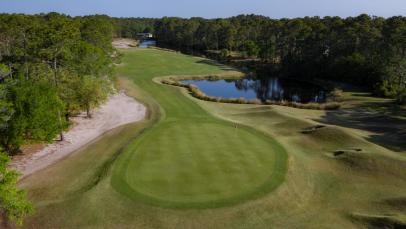
The Founders Club at Pawleys Island opened in 2008 and was built over the existing Sea Gull golf course, which dated back the mid-1960s. Instead of rough, the fairways are lined with sandy waste areas, making the course feel older than it is. The scenic layout has nice variety, with tree-lined doglegs moving in each direction and some elevation changes.
View Course
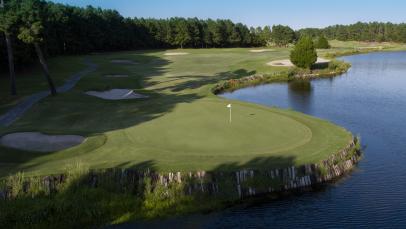
From Golf Digest Architecture Editor emeritus Ron Whitten:
At the same time in 1989 when Tom Doak was constructing the Heathland Course at Legends Golf Resort in Myrtle Beach, Pete Dye's younger son, P.B. Dye, was on site concocting another 18, the Moorland Course. (I'm pretty sure Doak routed Moorland at the same time he prepared his plans for Heathland, because early press releases stated Doak was do three 18s at the resort. He ended up building just one of the three.)
Moorland, like Heathland, opened in 1990, and I played both soon thereafter. As much as I enjoyed Heathland, I detested Moorland, for a number of reasons. First and foremost, it was clearly a young P.B. trying to outdo his famous father, which resulted in outlandish golf holes. Where Pete would create a boldly sloped green or two on his designs, P.B. went further at Moorland and created several greens that repelled shots into deep hollows or deeper bunkers. From many of those, you were probably playing out sideways or backward.
On some designs, Pete would tuck the green on a short par 4 behind a high mound. At Moorland, P.B. tried to top him by hiding most of his 18th green behind a towering 12-foot-tall bunker and making the green 63 yards long.
While Pete would use railroad ties along the edge of a water hazard or as a basket trap, at Moorland P.B. stuck railroad ties everywhere. There were a gazillion of them lining all the lakes on the course. There were railroad ties framing a square bunker that had a tree growing out of it. P.B. even slapped some railroad ties down as a stretch of cart path. (What a jolting experience that was.) I wrote at the time, "Moorland has more railroad ties than common sense."
I should note that many of these old railroad ties have now been removed, particularly the cart path ones. So I suppose I should like the course more now. But I don't.
I mostly dislike it because of its position right next to Doak's fluid, flowing, beautifully shaped Heathland Course. P.B.'s shaping seems extraordinarily harsh and artificial in comparison, his constant abrupt changes all the more unappealing. The fairway contours are as symmetrical as a washboard and just as grating, with lots of semi-blind approach shots from the bottoms of swales.
I remember one critic wrote that Moorland had, "Drama at every turn." I felt it was more like melodrama, with exaggerations left and right.
I was later told that P.B. was simply providing what owner Larry Young wanted, a course with the highest slope rating in the land. (This was the late '80s, remember, when being the toughest was all the rage.) For a short time after Moorland opened, Young got his wish, a course rating of 76.8 and a slope rating of 140, highest in the nation at the time. But within a year, Moorland was surpassed by Papa Pete's Ocean Course at Kiawah Island. Its course rating was only 76.7, but it boasted a slope rating of 145.
I'm glad the days of slope-boasting are over.
View Course

The Norman course at Barefoot Resort is highlighted by the seven holes that play along the Intracoastal Waterway. As is typical of many Greg Norman designs, the fairways run off into sandy waste areas, which present a unique challenge. The greens have subtle movement and often give the player the option of hitting a low, bump-and-run shot.
View Course
Find more courses near Garden City, SC




